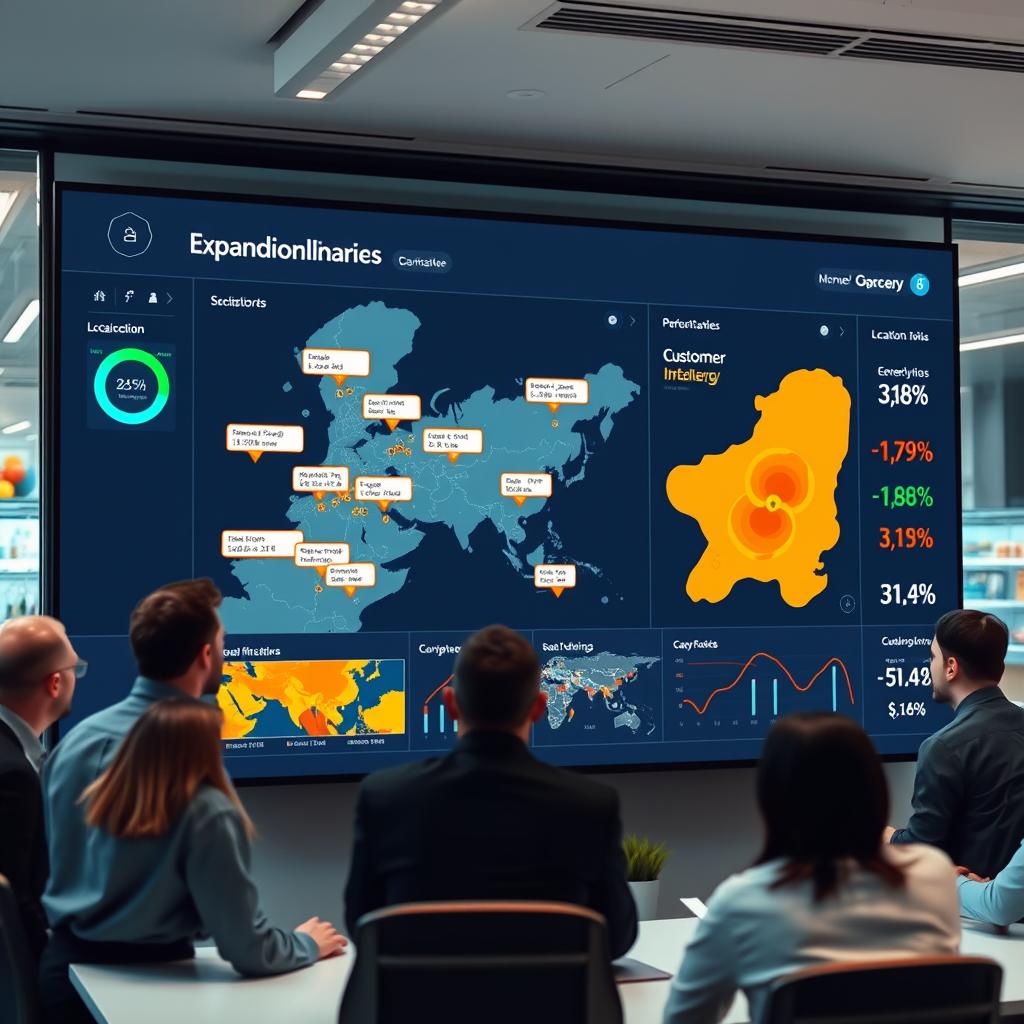As a regional supermarket chain prepared to expand into new markets, it lacked the data infrastructure needed to identify high-potential areas with precision. The client faced several strategic and operational challenges:
Outdated and fragmented geographic data made it difficult to pinpoint promising expansion zones.
Internal teams lacked access to actionable insights that combined demographics, consumer behavior, and competitive density.
Traditional methods of location scouting relied heavily on intuition and incomplete datasets, often missing hidden opportunities or over-saturating existing zones.
There was no unified platform to analyze location intelligence across multiple datasets, making risk analysis inconsistent and inefficient.
The client struggled to translate raw data into practical insights for decision-making, slowing down their expansion roadmap.
Without a reliable, scalable solution to guide market entry and site selection, the client risked poor investment decisions and inefficient resource allocation.

Gain reliable visibility into untapped geographic zones with high growth potential by leveraging accurate and comprehensive location intelligence.
Eliminate dependency on manual scouting methods by shifting to a fully data-driven approach that minimizes guesswork in site selection.
Understand competitor presence, local consumer demographics, and underserved regions to inform strategic expansion decisions.
Align market entry strategies with real-time demand patterns and socio-economic factors to maximize return on investment.
Build a scalable model that could be reused across future growth initiatives and new regional entries.
Acquire access to updated and structured datasets containing grocery store locations, competitor density, and related demographic indicators.
Develop a centralized platform capable of processing and visualizing geographic data for easy decision-making.
Automate the extraction of store location data from retail websites and mobile apps to ensure freshness and reduce manual workload.
Enrich raw location data with layers such as foot traffic, income distribution, and population density to identify areas with unmet demand.
Integrate geospatial analytics tools that allow internal teams to assess, compare, and prioritize market opportunities efficiently.
To address these needs, we developed a Location Intelligence Platform tailored to grocery retail expansion, combining web scraping, API integrations, and geographic analytics:
Built a robust data pipeline using web scraping and mobile app scraping tools to extract real-time store location data from grocery delivery platforms and retailer websites.
Integrated third-party and scraped datasets to enrich the platform with competitor density, demographic segmentation, and regional demand patterns.
Delivered interactive dashboards showing store coverage maps, high-opportunity zones, and competitor saturation indicators.
Enabled custom filtering to evaluate location feasibility based on footfall potential, income levels, and proximity to existing stores.
Provided automated, scheduled updates to ensure ongoing access to fresh, reliable supermarket location intelligence data.
Incorporated Dumpling grocery app data to enhance micro-level sales intelligence for regional research and benchmarking.
Backend Development: .NET Core (C#), ASP.NET Web APIs for data processing and system integration
Database & Storage: Microsoft SQL Server for structured data storage, optimized indexing for spatial queries
Visualization & Dashboards: Power BI and custom Angular/React dashboards for location insights and competitor overlays
Data Enrichment & External Sources: Integration with Census APIs, OpenStreetMap, and commercial foot traffic datasets
Security & Scalability: Azure-based hosting with role-based access control (RBAC), encrypted storage, and multi-region deployment for high availability
Enabled data-driven expansion across five priority regions with high growth potential.
Reduced manual research time by over 70% through automated location data collection and analysis.
Improved accuracy of site selection, minimizing investment risk and accelerating market entry.
Provided full visibility into competitive saturation and consumer readiness in each region.
Equipped the client with a reusable, scalable solution for future geographic planning.
Transformed expansion strategy from reactive and manual to proactive, data-powered, and insight-led.
Last Updated: 21-04-2023